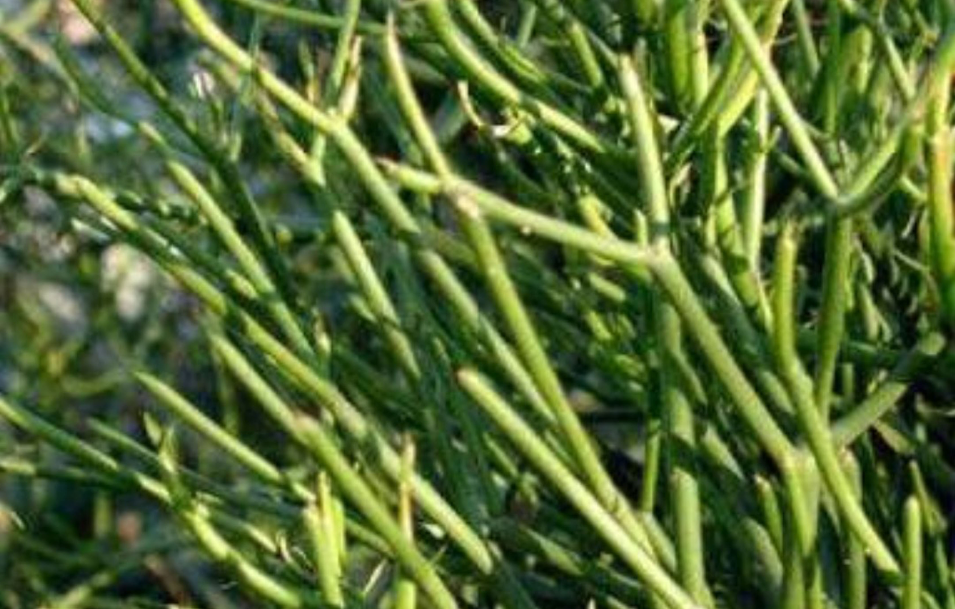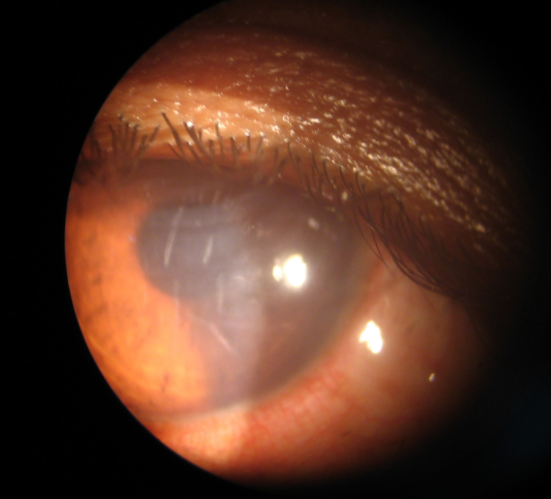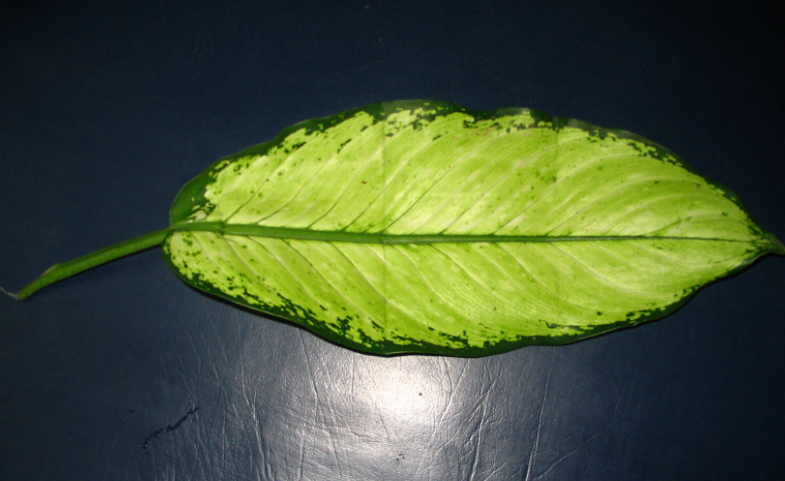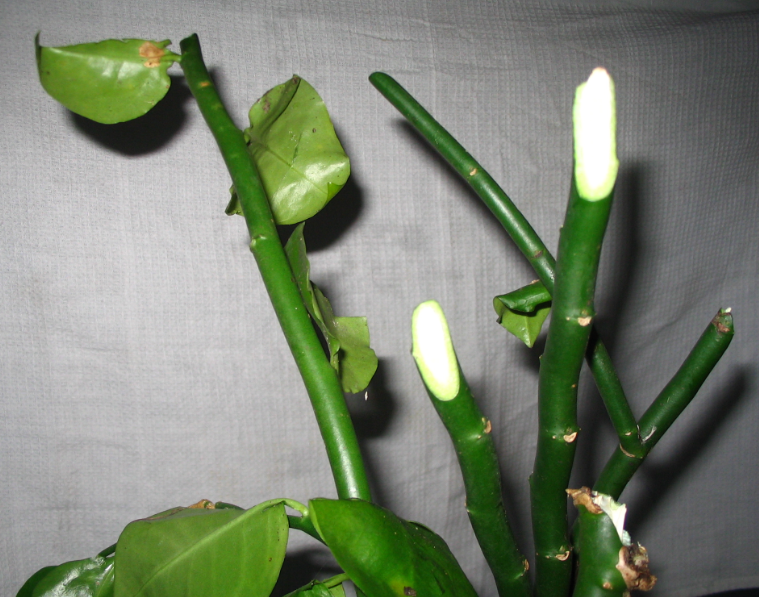Introduction
Some garden plants which produce milky juice s can cause ocular injuries in case of accidental contact with human eyes. The plant juice from different kinds of plants contains varying chemical components. Few of them are toxic and can elicit different pathogenic mechanisms and varied clinical manifestations. The ocular injuries which can be caused by plant juice from the family of Euphorbiaceae consists of contact or photo dermatitis, conjunctivitis, keratitis of varied intensity, corneal ulceration, uveitis with or without hypopyon, corneal scarring, miosis and blindness.1,2 Plants from genera Dieffenbachia have been reported to cause mild to moderate conjunctival chemosis with congestion, subconjunctival hemorrhage, and fine needle-like blue crystals in the corneal stroma.3,4,5 We report a case of ocular injuries caused by
Case Report
Case 1
A 35 -year-old male suffered plant juice fall on his face while he was cutting Euphorbia tirucalli. He suddenly washed his face with tap water. After some time, developed a foreign body sensation in right eye. There was associated burning pain with red eye and visual blurring for 4 hours. Then he came to ophthalmology OPD where examination findings showed visual acuity of 6/12 OD and 6/6 OS, with moderate conjunctival congestion. He was given thorough eye wash and started initial treatment with topical corticosteroids, cycloplegics and antibiotic eye drops. On following day there was a reduction in vision to 6/18 OD. Stromal edema and Descemet’s folds developed in the right eye. Anterior chamber showed 2+ cells and moderate flare. The intraocular pressure and fundus were unremarkable. Treatment consisted of topical 1% prednisolone acetate eye drops, 2% homatropine eye drops and 0.5% moxifloxacin eye drops. The epithelial erosions healed in 2 days, and the stromal edema and anterior chamber reaction back to normal in 1 week. His vision returned to 6/6 OD with no findings in the cornea.
Case 2
A 24 -year-old male was accidently inoculated with the Dieffenbachia sequine (Figure 3) sap into his left eye while he was cutting it. He felt a stinging pain and watering immediately. He irrigated his left eye with tap water by himself, and was given eye wash from a local hospital 2 hours later. The symptoms worsened and visual blurring progressed, so he came to our OPD 5 hours later. On examination of the left eye visual acuity was 6/24, with mild eyelid swelling, conjunctival chemosis with corneal epithelium intact. There was mild stromal edema, descemets membrane folds and fine KPs +. Anterior chamber showed 1+ cells and mild flare. The examination done in the next day showed that visual acuity in the left eye was still same. There was mild upper eyelid swelling, as well as mild conjunctival chemosis and congestion (Figure 4). The cornea showed mild stromal edema from subepithelial layer to the posteri or stroma which were predominantly in the interpalpebral area. The intraocular pressure, anterior chamber and fundus were unremarkable. The left eye was treated with topical 1% prednisolone acetate, 2% homatropine eye drops and moxifloxacin eye ointment. On his last follow -up vision returned to 6/6
Case 3
65 year old male presented with history of fall of sap from Euphorbia tithymaloides plant (Figure 5) in the right eye of 3 hours duration. Slit lamp examination showed lid oedema, circum corneal congestion and chemosis (Figure 6). An epithelial defects of size 8.5mm x 5 mm was noticed in the central cornea (Figure 7). Corneal haze due to corneal oedema and numerous Descemets Membrane folds were present. Fine KP s +. A nterior chamber showed 3+ cells and moderate flare. The visual acuity was CF 5m in the affected eye. The patient was treated with topical 1% prednisolone acetate eye drops, 2% homatropine eye drops and 0.5% moxifloxacin eye drops. After a period of one week, cornea cleared and the visual acuity improved to 6/12 (immature senile cortical cataract present).
Discussion
There are about 12 families, 20 genera and above 5000 species of plants were known to have milky sap worldwide. They are used in various fields like decoration, food, or medicine, and have industrial value. The components of the plant sap are not yet known, but the toxic constituents have been identified, which include essential oil, alkaloids, amino acids, cyanogenic glycerides, cardioactive glycerides, furanocoumarins, plant acids, poly-acetylene compounds, proteins, peptides, saponins and terpenes.6
The most common plants those sap are known to cause keratitis are: Calotropis , Euphorbia7,8,9,10 Dieffenbachia,11 Hippomane 12, Asclepias.13
1. Common name: erukku
Family: Apocynaceae
Standard plant name: Calotropis procera
2. Common name: Pencil tree
Family: Euphorbiaceae
Standard plant name: Euphorbia tirucalli
The latex is a caustic milky white juice produced when damaged, like other Euphorbia species. Euphorbiaceae plants are known to store large amounts of latex in their organ called the laticifer14 The major constituents of the plant sap are isomers of triterpenes with the molecular formula C30H50O (MW: 426), such as euphol, tirucallol, glut-5-en-3-b -ol, cycloeuphordenol, euphorginol, aamyrin, lanosterol, cycloartenol etc.15,16,17,18
3. Common name: Candelabra cactus
Family name: Euphorbiaceae
Standard plant name: Euphorbia lactea
4. Common name: creeping fig
Family: Moraceae
Standard plant name: Ficus pumila
F. pumila contains numerous sesquiterpenoid glucosides as well as triterpenes19,20 Two compounds (bergapten and oxypeucedaninhydrate) have previously been isolated from this plant21
4. Common name: Manchineel
Standard plant name : Hippomane manchinella
Milky white sap contains phorbol. Burning these plants may cause ocular injuries if it's
smoke reaches the eye.
5. Common name: madder
Family : Rubiaceae
Standard plant name: Rubia sp.
6. Common name :Dumb canes
Family: Dieffenbachia
Standard plant name: Dieffenbanchia seguine, Diaffenbanchia amoena
Dieffenbanchia species contains raphides which are crystalline, needle like structures the plant ejects when cell walls are damaged. The structures are usually found in the sap which also contains oxalic acid and asparagine.
7. Common name: Kakatundi
Family: Apocynaceae
Standard plant name: Asclepias curassavica
Asclepain C-II is the minor proteolytic component seen in the latex, but showed higher specific activity than asclepain C-I. Both enzymes showed proteolytic activity at pH 9.4-10.2, but poor thermostability. The activities of asclepain C-II is shown to be inhibited by cysteine proteases inhibitors like E-64, but not by any of the other protease inhibitors such as 1, 10-phenantroline, phenyl methane sulfonyl fluoride, and pepstatine.22
8. Common name: Chulli kandal
Family: Acanthaceae
Standard plant name: Acanthus ilicifolius
Conclusion
Plant sap keratitis is a major cause of occupational injury to the eyes in people who work with plants which produce milky latex. They should be cautioned to wear gloves and eye protection (goggles) and to wash the exposed areas of their body with soap and water before contact with any individual. Patients who give a history of plant sap entering into their eyes should be immediately irrigated with copious amount of normal saline and be warned that their vision might get worse before it improves over hours or days. Close follow up is important in the first few days to control inflammation and to prevent secondary infection and complications.












